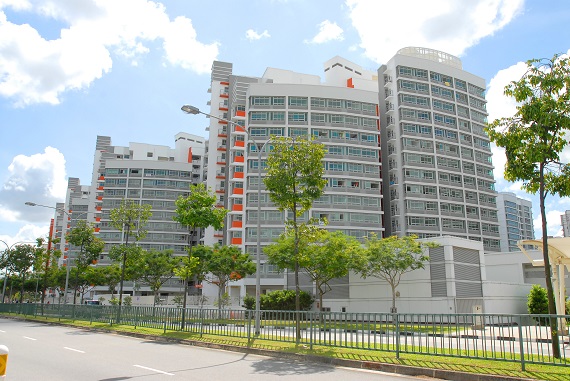This article is republished with permission from Dollars and Sense.
 HDB at Sengkang. Photo: Lian Beng HDB at Sengkang. Photo: Lian BengOn the back of regular reports in mainstream papers about the softening property market and commentaries by industry experts about the urgent need to remove some of the property cooling measures, we decided to look into whether home prices have fallen in Singapore. |
Comparing The Prices In 2006 And 2016
First, we look at how much today’s prices compare to the past. For simplicity sake, we’ll use Singapore’s Real Estate Exchange as a guide and will take the prices in 2006 for no reason other than the fact that the exchange only provides data for HDB flats from that year onwards.
We found that from 2006 to 2016, the price of
- HDB flats went up over 92%;
- Non-landed homes went up close to 121%; and
- Landed homes went up close to 143%
These percentage increases have already accounted for the “slump” in prices from its historical highs in 2013 and 2014.
How Much Have Prices Actually Fallen From Its Highs?
The next thing we can calculate is how much prices of the individual property types have fallen since their peak.
|
"HDB home prices rose by 92% in the past decade while median wages rose by only 26%. "Prices have been falling, but these decreases have not even made a dent in the overall increases in property prices."
|
The prices of HDB flats were at their peaks in April 2013. Since then, prices have fallen approximately by 11%. Prices of non-landed private property were at their peaks in January 2014. Since then, prices have fallen slightly over 7%. Prices of landed homes were at their peaks in February 2014. Since then, prices have fallen by roughly 12.5%.
Prices have been falling, but these decreases have not even made a dent in the overall increases property prices have seen in the last decade alone. They are still sitting on pretty profits upward of 100%.
Further, the ability of property developers to hold out or use loopholes in government policies to hang on to properties rather than lower prices underscores the fact that the property market is not in the doldrums. And that there is much more room for prices to decrease. We think the government was right not to ease any of the current property cooling measures. Doing so might have been seen as bending to the wills of the property developers.
Does This Mean That The Property Cooling Measures Have Not Been Effective?
Far from it. The cooling measures probably helped avoid a meltdown in the property market.
Prices would have gone even higher and a bubble might have burst causing widespread mayhem for laypeople. Many people, having not seen this crisis, would easily forget the government’s role in averting this crisis.
A property bubble bursting would have seen many people losing their homes as banks call for top ups when their home values dropped. For example, a home that cost $1 million in a property bubble could see its value drop to $750,000. The owner could have stretched himself to provide his family a dream home and taken up to $800,000 in loans. Once the bubble bursts, the banks would immediately call approximately $200,000 in top ups. We don’t think many people can cough up such an amount on short notice, and this home would have been seized by the bank in a worst-case scenario.
| ♦ Are Homes Affordable Then? |
|
Considering we’re speaking about affordability, let’s just concentrate on the figures for HDB as other segments of homeowners may portray steeper elasticity of demand. |







